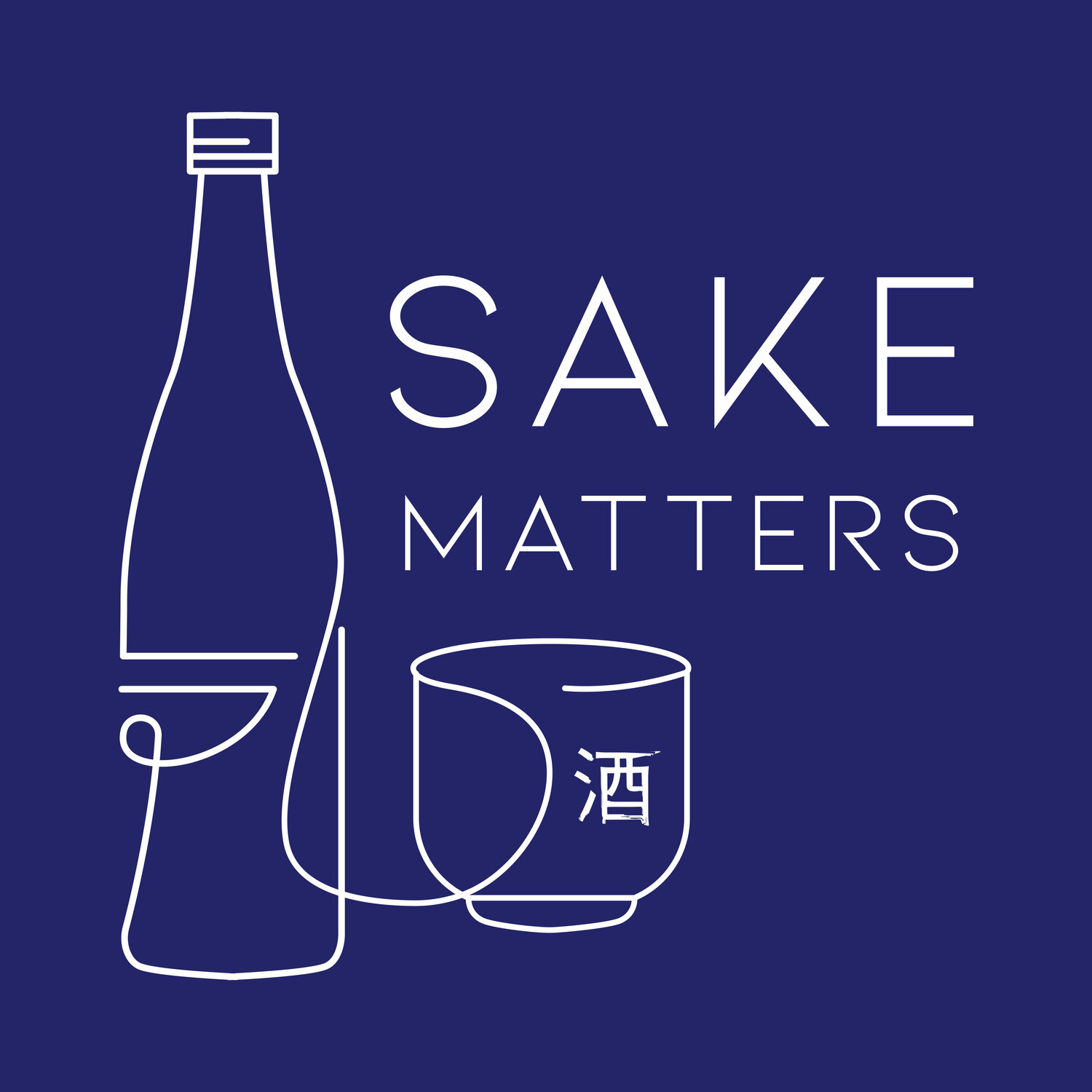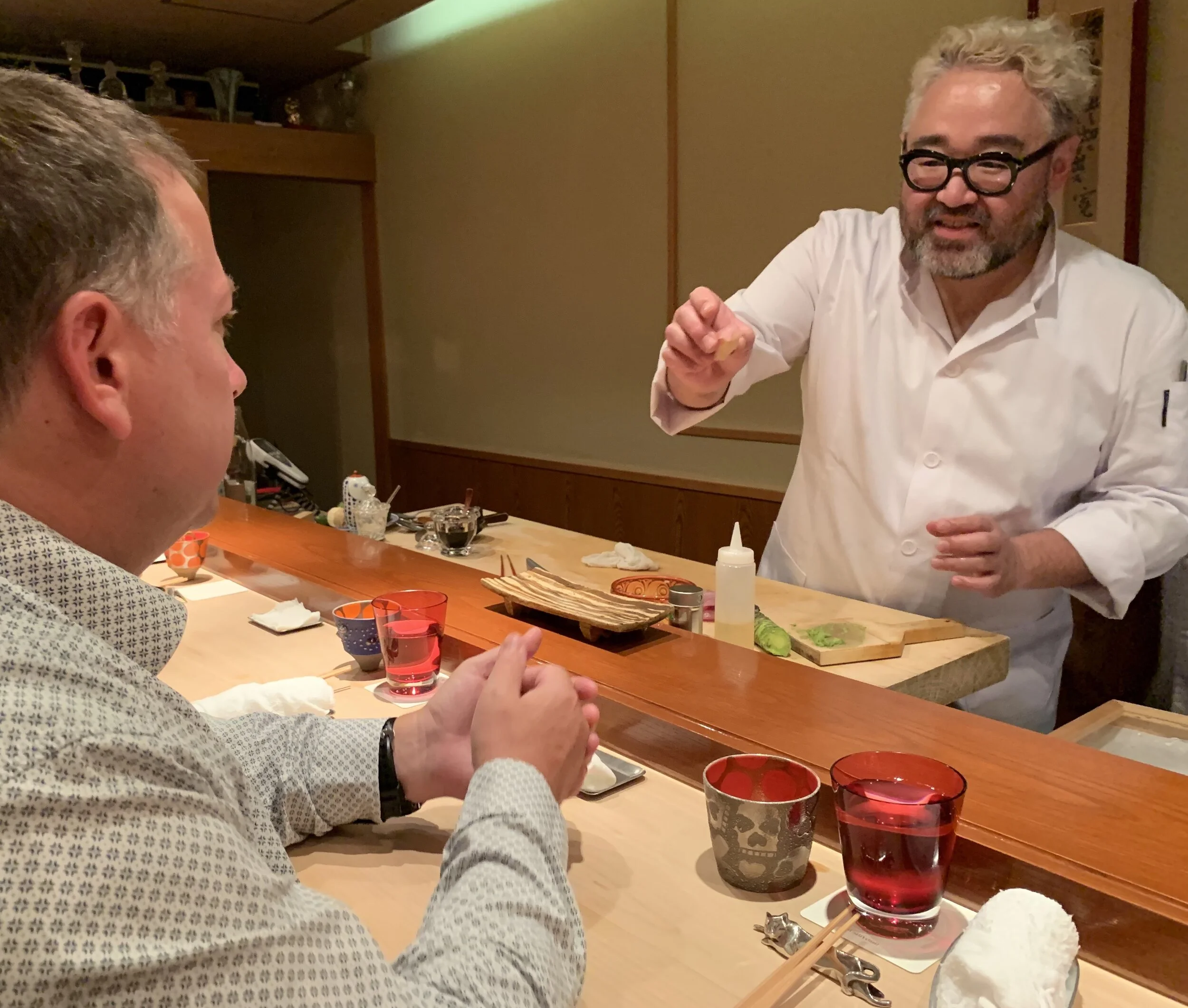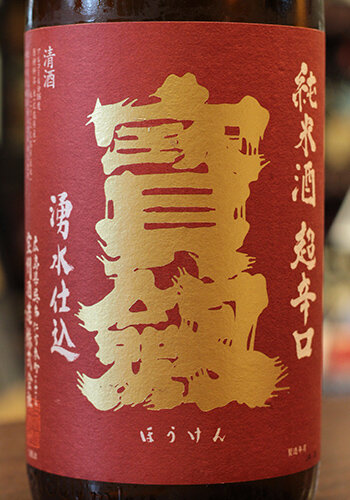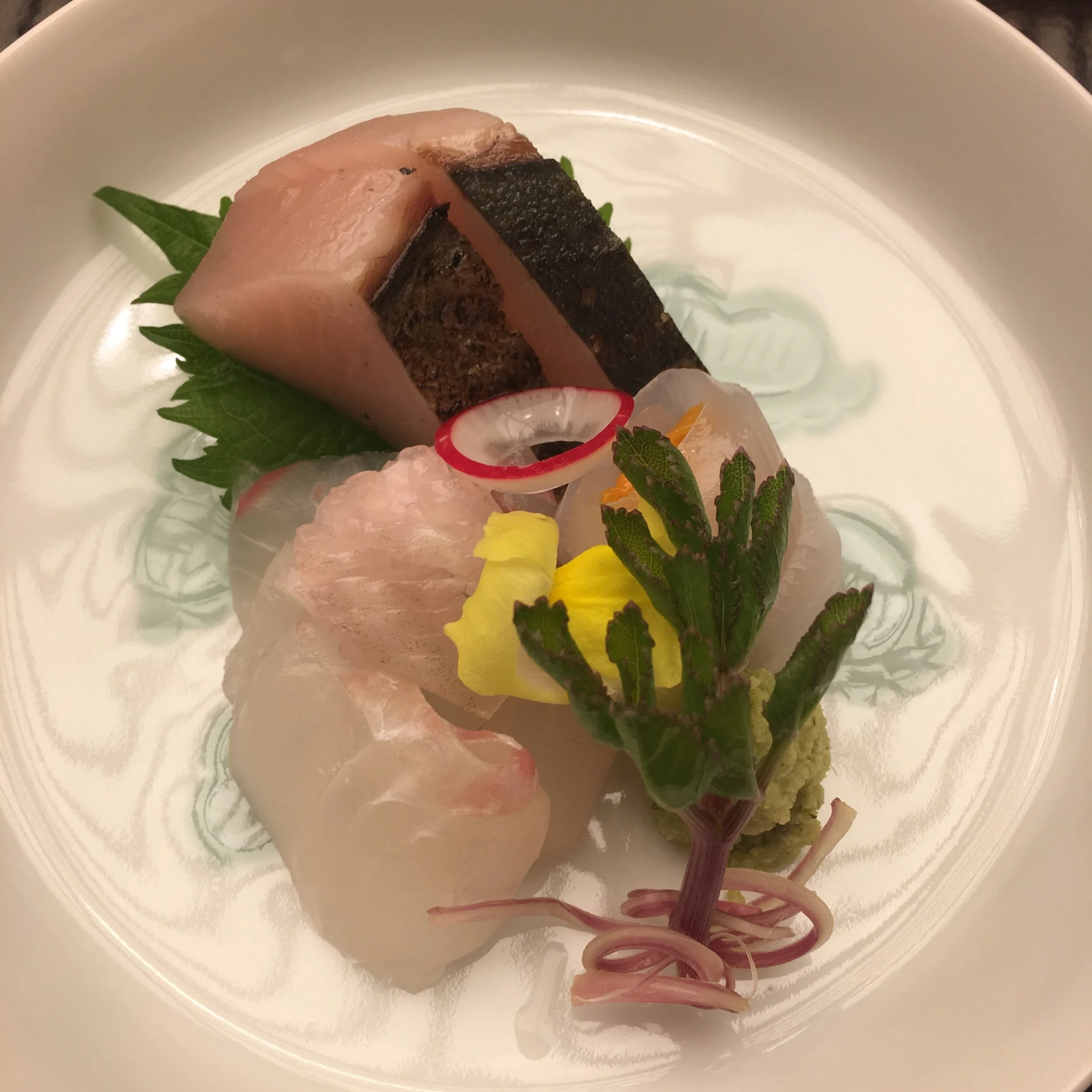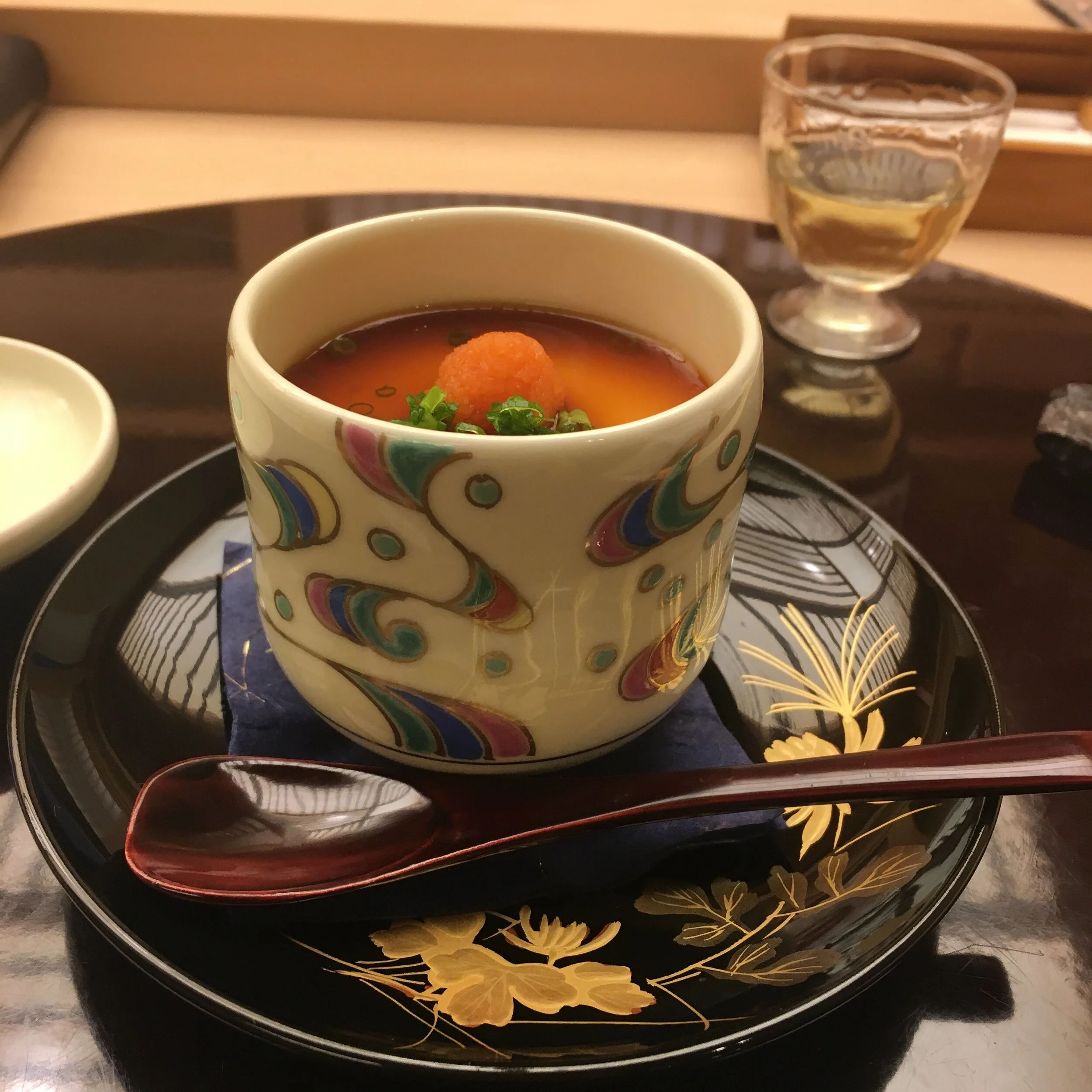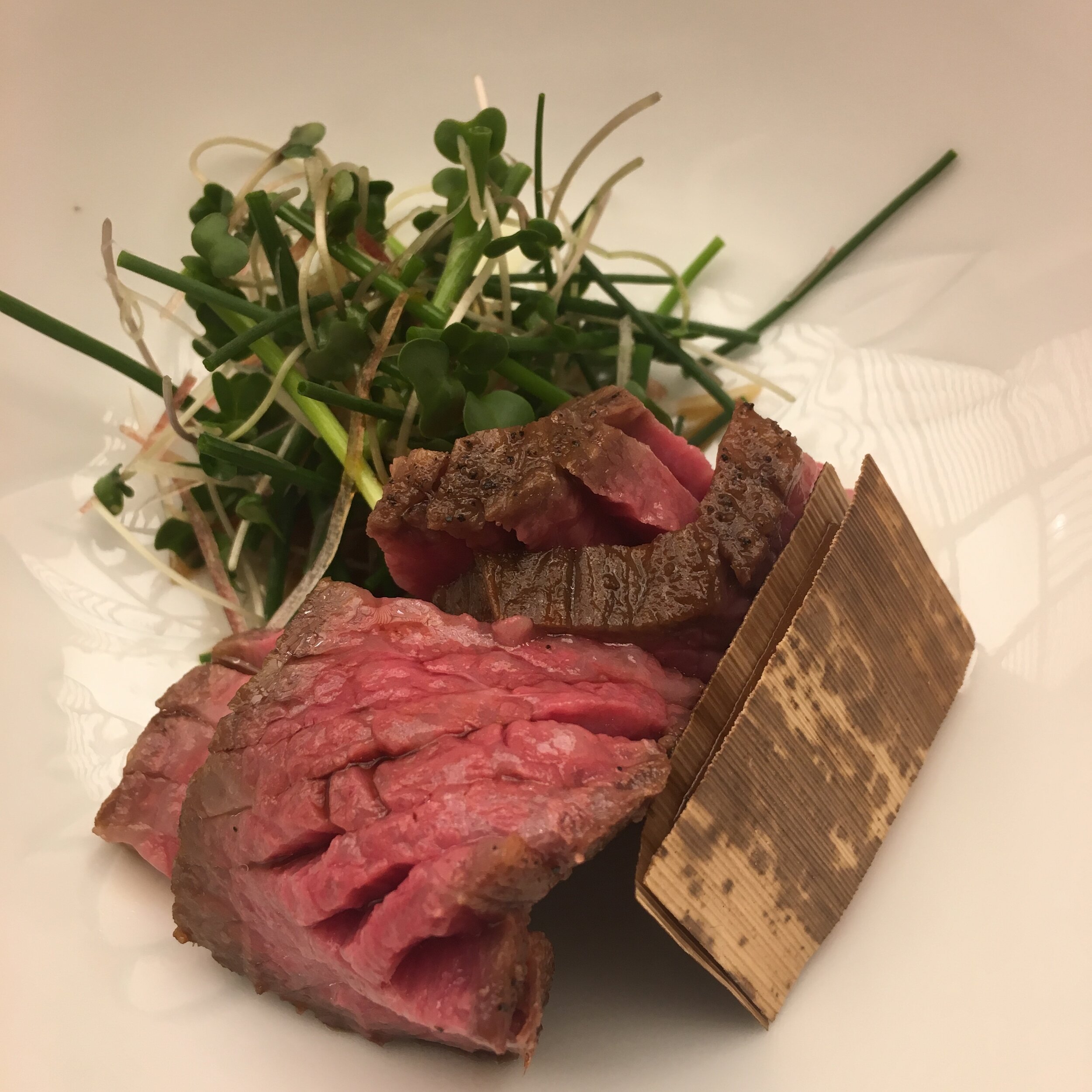HOUKEN – SAKE PHOTOBOMBER
A multi-Michelin starred flashback coupled with an overdose of David Chang’s addictive series Ugly Delicious had me rushing out to buy one of Hiroshima prefecture’s most food friendly Junmai. It was time for a nostalgic re-tasting of Houken.
A seasonal Hong Kong storm had given me the opportunity for a lazy flick back through endless iPhone pics, during which I noticed a couple of dinner shots in Japan where I had ended up drinking the same Sake, the choices of two chefs at two different kaiseki dinners.
To top it off, I then noticed Dave (having spent the best part of a cumulative day in his company now thanks to Netflix, I think I can call him Dave) and his eternally cheerful sidekick Aziz Ansari sat quaffing the very same Sake. In Den Tokyo, no less. A great pairing to their rice stuffed Den Fried Chicken, apparently.
Houken Shuzo Co., Ltd lies just over 660 miles west of Tokyo, and 30km east or so of Hiroshima city, a short stagger from the iconic Seto Inland Sea and at the foothills of Mt. Noro. I first tasted their excellent Junmai Super Dry in 2018 at the fabulous Kisetsu Ryori Nakashima, a three star Michelin splurge, just a short drive from Houken in November 2018. And then, in late 2019, a visit to Wakayama ended up with another credit card melting in Osaka at the equally wonderful Sushi Yoshi.
However in the whirlwind of all the knife wielding mastery, an abundance of open flame and the frequent rasps of fresh wasabi grating, I can only admit to knowing that I liked the Houken Super Dry Junmai. I couldn’t tell you much more than that about it.
Amidst the culinary wizardly playing out in front of me at both occasions, I simply didn’t allow myself the time mid-dinner to properly invest in tasting it…until now. Thanks to my latest pals at Pillariwine here in Hong Kong, I was able to track down a couple of bottles to try at leisure.
Credit: Koichi Masuda
Quick Sakagura intro first though. Founded in 1872. I’m reliably told that Houken is located in such a way that within the brewery, Hiroshima’s wonderful soft water, filtered on its travels through Mt Noro, springs up from beneath. Houken literally translates to ‘treasured sword’, a statement used by pioneering brewery marketeers to send a ripple of excitement through the media.
Leading the Houken crusade stands Tetsuya Doi, 5th generation Toji, who made a special effort to concentrate on the Hiroshima native Hattan Nishiki rice varietal. Maximising the Sakagura’s rare spring water and his very talent for exquisite sake production, Doi-san announced the potential of his product exclaiming “There is a sword in Hiroshima”. That’s how the legend goes anyway, although my reliance on translation apps doesn’t necessarily help the narrative so well.
Since then, the standard Junmai Sake, Hattan Nishiki, has received tremendous support from local Hiroshima restaurants. And further afield, clearly.
The ever-animated Hiroki Nakanoue in action, note my skull Guinomi of Sake
Flamboyant Chef at Sushi Yoshi, Hiroki Nakanoue, is clearly a Houken fan and he quite simply got my attention with this Sake when he pulled out an Isshobin of it, stating:
“This is one of my favorite Sakes.”
It was also memorable by the generous slug poured into my gothic Guinomi, but despite the volume I didn’t get around to jotting down any tasting notes. At Sushi Yoshi, your hands are your cutlery, there’s no time for pens.
Anyway, back to the Sake. How was it this time round? Well, not surprisingly, it’s dry. And mindful of that, I picked the opportunity to enjoy it with some sushi as I thought it would match the cleanness of the fish, as well as bring out some of the sweetness therein, which it did.
The Sake is a good leveller, by which I mean it allows accompanying food to shine out which other more charismatic Sake wouldn’t permit. It truly is a good food Sake. With fish, the short finish is crisp and cleanses the palate well. The aroma is very light and doesn’t give much away. On the palate, it’s abundant with bran goodness, almost rice husky. But I’m making this all sound very one dimensional which isn’t fair.
We had a range of seafood, from ultra-ozone squid, through black bream, firefly squid, a tuna threesome all the way to the oily goodness of horse mackerel, sea eel and Edo favourite, the vinegar dipped kohada. And Houken was a match for all, calmly going about its business, supporting and enhancing the range of marine flavours brilliantly.
But what has really made this Sake into a Sake for life, is how it has evoked great memories. To top things off, I sent a very speculative email to Chef Tetsuo Nakajima at Kisetsu Ryori Nakashima where I first got a glug of Houken. Still welcoming guests to the restaurant, although on limited service times, he found a moment to write back to me, much to my delight.
His eloquent pairing methodology was kindly translated for me by Pocket Concierge:
“In our restaurant, the role of Sake is not only to drink but also to make the food more delicious. The good Sake comes into existence in the condition of good food ingredients.
Throughout Japan, there is almost only soft-water available and the quality depends on the areas. That is the reason we focus on the local Sake.
We believe a good paring of the food with the sake when they are both came from the water from Hiroshima, it bring maximum improvement in quality.
Seasonal limited ingredients, and also seasonal limited Sake are used.
For the other restaurants, they may have their own thought on the content of the menu, while in Kisetsu Ryori Nakashima, we take these concepts above to inform our food and Sake.”
Chef went on to recall my visit with some clarity and how surprised he was that, as a foreigner, I could read some of the Kanji on the labels. He specifically remembered '純米吟醸' and '生酛', and we had indeed that evening also had a Junmai Ginjo and a Kimoto. No doubt Chef was less impressed that my Kanji knowledge ended there, although he of course had the good grace not to refer to that in his message.
The Washoku at the restaurant is also seasonal wherever possible, Chef went on to write that:
“I always take awareness of season in mind as the most important part to my dish.”
This is played out in the recommended Sakes, which were excitedly consumed – for example 西條鶴 Saijotsuru, an hour or so down the train tracks in Sake Town, Saijo, a mere youngster of a brewery founded in 1904.
In a nutshell the philosophy is one that we all know is right and good but most of us, even with the best intentions, end up reaching in the supermarkets for imported goods (strawberries aren’t just for Wimbledon fortnight, are they?) with little thought to seasonality and locality. Most days I walk through a wet market on my way to the glitzier (and pricier) supermarket, I should stop doing that every once in a while and get amongst the day’s fish.
Kisetsu Ryori Nakashima is doing it day in day out, and I love that place for it.
FOOTNOTE:
Kisetsu Ryori Nakashima advised that they purchase Sake from a local store called ’Sake Show Yamada (酒商山田)’ in Hiroshima, should anyone be in the area and thirsty: www.shop.sake-japan.jp & www.sake-japan.jp
QUICK GLOSSARY:
Kaiseki: Traditional Japanese cuisine style involving very small, intricate dishes
Junmai 純米: Sake made using only rice, water, yeast and koji – no added alcohol (純: pure; 米: rice)
Sakagura: Basically, the Sake brewery itself
Toji: Master Sake Brewer and team leader of all brewery workers
Hattan Nishiki: 1970s Hiroshima prefecture rice varietal
Guinomi: A style of Sake drinking vessel
Isshobin: The most popular bottle size in Japan, this 1 sho bottle holds 1800ml/1.8l (1 go合 = 180ml / 10 go = 1 sho升)
Kohada: Name given to medium sized fish known as ‘gizzard shad’. Kohada are one of the most traditional varieties of authentic Edo period sushi. Normally served after a light salting and short rice vinegar pickling preparation
Washoku: The traditional cuisine of Japan (和食)
純米吟醸' & '生酛: Junmai Ginjo and Kimoto respectively. For Junmai, see above. Ginjo is a categorisation for Sake made from rice at a polishing ratio below 60%. Kimoto is a style of Sake that uses the original yeast starter method laboriously created using long paddles to promote natural lactic acid development
LINKS:
Houken
www2u.biglobe.ne.jp/~houken
1-11-2 Nigatahonmachi Kure-shi Hiroshima 737-0152
Pocket Concierge
www.pocket-concierge.jp/en/
Kisetsu Ryori Nakashima
Japan, 〒730-0004, 10-4 Higashihakushima-cho, Naka-ku, Hiroshima-shi, Hiroshima
www.nakashima-ryori.com
Sushi Yoshi
Japan, 〒530-0054 Osaka, Kita Ward, Minamimorimachi, 2 Chome−3−23 Ⅱ 和光住建南森町ビル1
Pillariwine Co., Ltd
Pottinger House, 2A, 26 Pottinger St, Central, Hong Kong
www.pillariwine.com.hk
